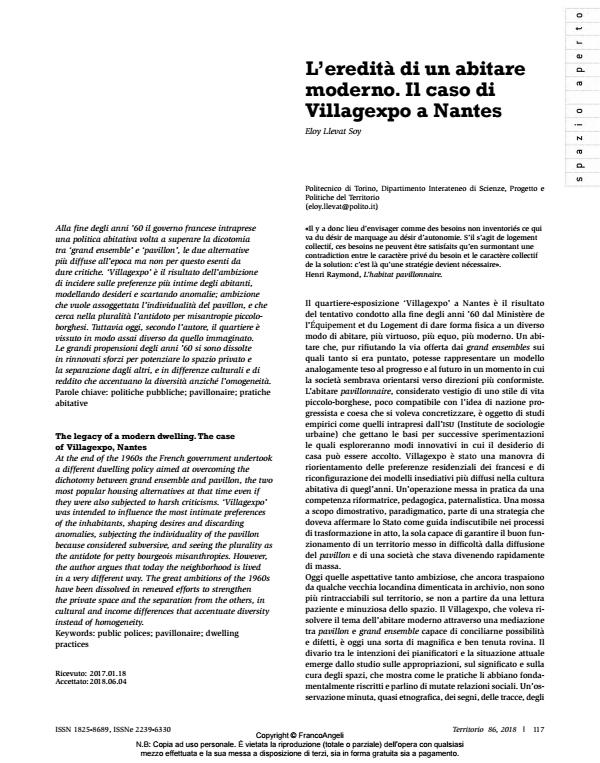The legacy of a modern dwelling. The case of Villagexpo, Nantes
Journal title TERRITORIO
Author/s Eloy Llevat Soy
Publishing Year 2019 Issue 2018/86
Language Italian Pages 8 P. 117-124 File size 1633 KB
DOI 10.3280/TR2018-086016
DOI is like a bar code for intellectual property: to have more infomation
click here
Below, you can see the article first page
If you want to buy this article in PDF format, you can do it, following the instructions to buy download credits

FrancoAngeli is member of Publishers International Linking Association, Inc (PILA), a not-for-profit association which run the CrossRef service enabling links to and from online scholarly content.
At the end of the 1960s the French government undertook a different dwelling policy aimed at overcoming the dichotomy between grand ensemble and pavillon, the two most popular housing alternatives at that time even if they were also subjected to harsh criticisms. ‘Villagexpo’ was intended to influence the most intimate preferences of the inhabitants, shaping desires and discarding anomalies, subjecting the individuality of the pavillon because considered subversive, and seeing the plurality as the antidote for petty bourgeois misanthropies. However, the author argues that today the neighborhood is lived in a very different way. The great ambitions of the 1960s have been dissolved in renewed efforts to strengthen the private space and the separation from the others, in cultural and income differences that accentuate diversity instead of homogeneity.
Keywords: Public polices; pavillonaire; dwelling practices
Eloy Llevat Soy, L’eredità di un abitare moderno. Il caso di Villagexpo a Nantes in "TERRITORIO" 86/2018, pp 117-124, DOI: 10.3280/TR2018-086016